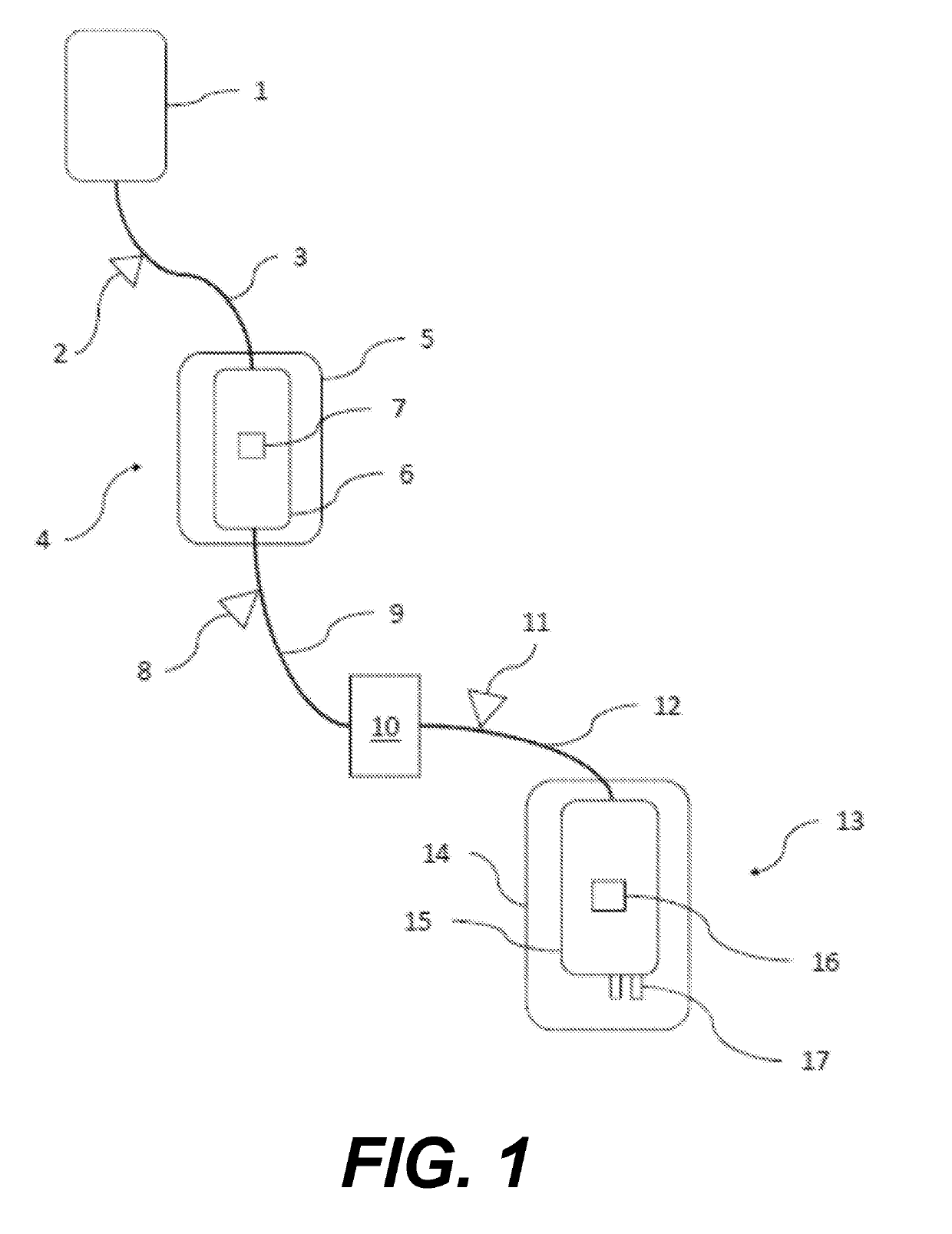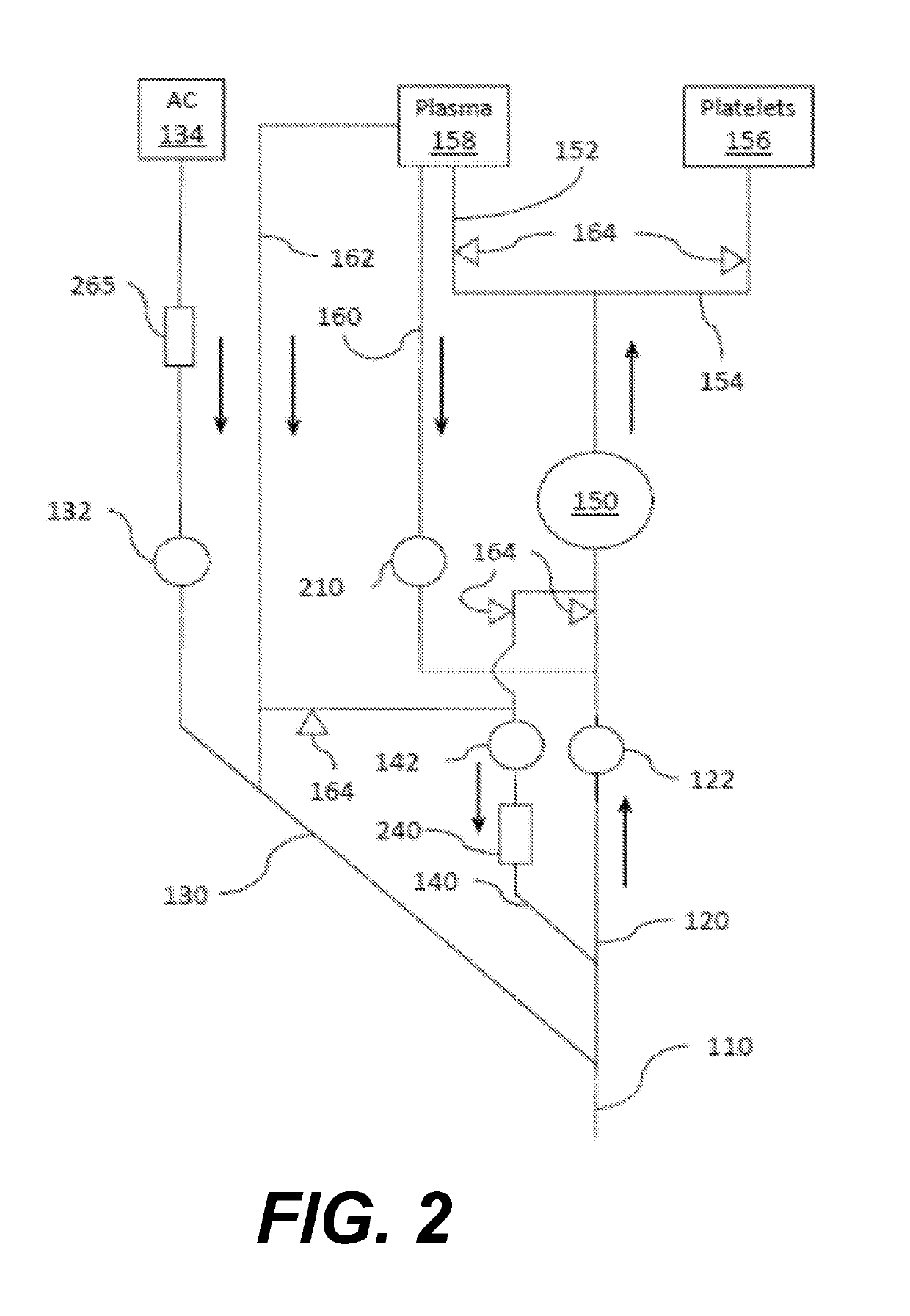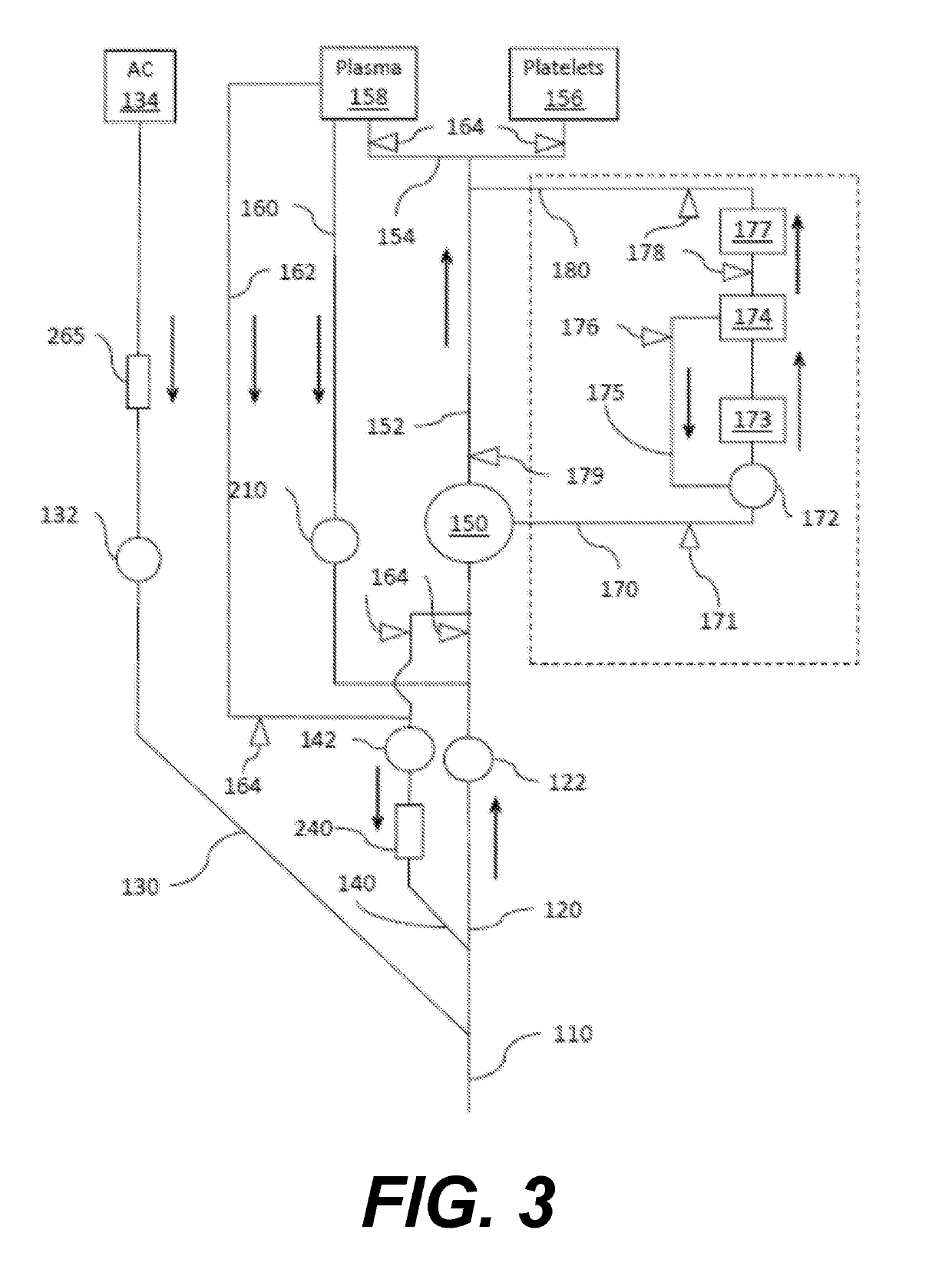Anaerobic Blood Storage and Pathogen Inactivation Method
a technology of anaerobic blood and pathogens, applied in the field of blood and blood products, can solve the problems of presenting a risk to patients with respect to the potential exposure to immunogenic and pathogenic contaminants, several weeks exacerbated risk, and plt are more susceptible to bacterial contamination and proliferation than other blood components, and achieve the effect of reducing the formation of microparticles
- Summary
- Abstract
- Description
- Claims
- Application Information
AI Technical Summary
Benefits of technology
Problems solved by technology
Method used
Image
Examples
example 1
n of Blood and Sample Preparation
[0118]Six ABO-matched whole blood units are collected, pooled, and split into 6 samples in three pairs as provided in Table 2. Six units of whole blood (450 mL+10%) is collected in CPD and held on cooling trays until pathogen inactivation treatment. On the day of donation (D0) these six whole blood units are pooled and split. Deoxygenation of whole blood is performed as described below. Units are treated provided with saline or riboflavin as indicated in Table 2. Samples 3 and 4 are oxygen reduced after pathogen treatment and component separation and preparation of packed red blood cells. Samples 5 and 6 are oxygen reduced at the whole blood stage and pathogen reduced prior to component separation and preparation of packed red blood cells. Riboflavin containing units are transferred to a MIRASOL® whole blood illumination bag and all the units placed on a cooling tray. Within 24 hours of donation, whole blood units are processed by the buffy coat meth...
example 2
n, Leukoreduction and Gas Depletion of Whole Blood
[0119]Pooled and split red blood cell units (“Blood units”) in CPD are leukoreduced according to manufacturer's instructions after Mirasol treatment and component separation.
[0120]Each whole blood unit (sample 5 and 6) is processed for oxygen depletion by transferring to a whole blood in collection bag connected to an Sorin D100 membrane oxygenator and at a flow rate of 700 ml / minute with a mixture of 95% N2 and 5% CO2 gas to achieve pre-storage % SO2 of less than 3% and pCO2 of 70 mmHg (37° C.). For Sample 6, O2 from Mirasol® disposables (not including the riboflavin solution) are purged of oxygen prior to processing Immediately following the preparation of each sample, ABL90 blood gas levels are determined according to manufacturer's instructions to establish baseline SO2 and pCO2 levels (e.g., T0). For Sample 6, oxygen-reduced blood is then transferred to the Mirasol treatment bag. After adding riboflavin, it is placed in the Mira...
example 3
Pathogen Reduction
[0122]Samples are processed using the Mirasol Illuminator according to manufacturer's instructions. The experiment is replicated five times for a total of n=5 samples at each data point.
PUM
| Property | Measurement | Unit |
|---|---|---|
| wavelength | aaaaa | aaaaa |
| wavelength | aaaaa | aaaaa |
| wavelengths | aaaaa | aaaaa |
Abstract
Description
Claims
Application Information
 Login to View More
Login to View More - R&D
- Intellectual Property
- Life Sciences
- Materials
- Tech Scout
- Unparalleled Data Quality
- Higher Quality Content
- 60% Fewer Hallucinations
Browse by: Latest US Patents, China's latest patents, Technical Efficacy Thesaurus, Application Domain, Technology Topic, Popular Technical Reports.
© 2025 PatSnap. All rights reserved.Legal|Privacy policy|Modern Slavery Act Transparency Statement|Sitemap|About US| Contact US: help@patsnap.com



